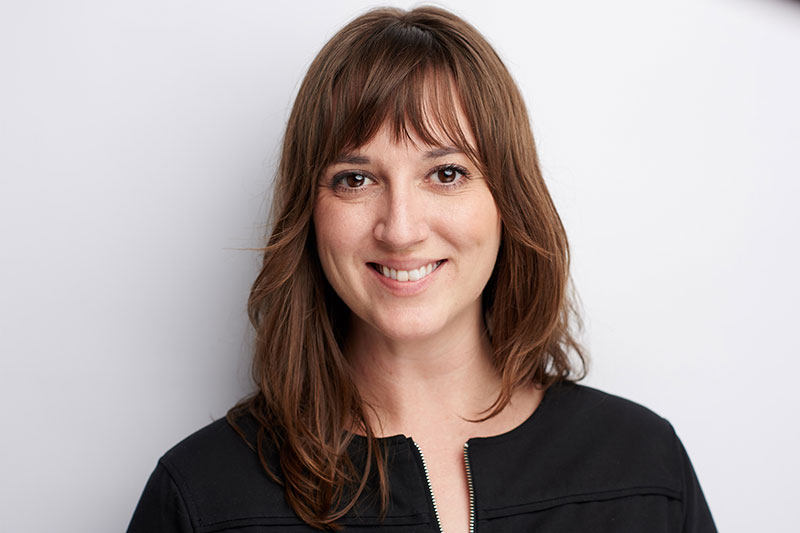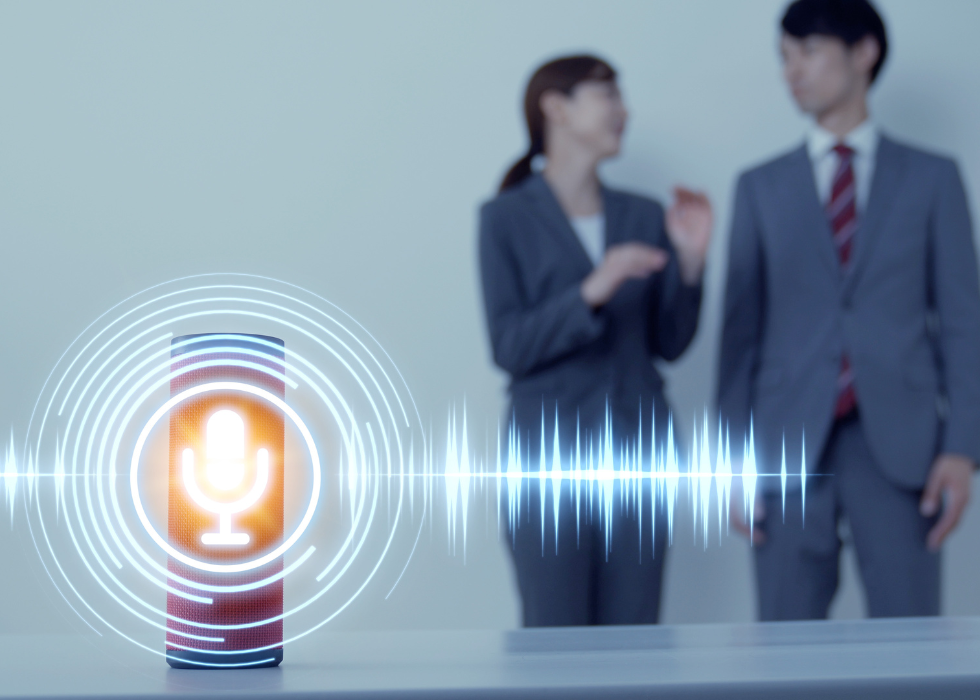eBay Main Street – San Jose, California
In her own words, Emily Webster, Head of Media Architecture, describes how ESI Design created a new front door for eBay’s Silicon Valley corporate campus.
The Brief
eBay wanted to bring its community together in a way that really represented its brand and company culture. The new building on campus needed to showcase what eBay is and could be, while still working as a practical space where employees could come together to work and socialize.
The Challenge
The main challenge was that there was no building when we started. When ESI Design came to the project, eBay and PayPal were sister companies, and historically whenever eBay needed to bring its community together it would use the PayPal campus. In 2015, PayPal and eBay split, and eBay no longer had access to those spaces. It effectively lost the ability to bring the community together, so we wanted to find a place on the existing campus where they could gather. We started with a blank canvas.
Rolling With the Changes
In an early iteration, ESI Design envisioned the building eBay now calls “Main Street” as a temporary structure, and that idea formed the style of building. But very quickly we realized that to bring the community together, eBay needed its own permanent home on campus. There wasn’t a lot of space for a new structure, but we found a sweet spot between two existing buildings.
The Goal
The high-level goal was to create a space for the eBay community to gather in, for both social and work-focused events, such as conferences and meetings. It needed to be a very active place where you could bring in new clients or partners and impress them with the technology capability that eBay has.
We were able to think about how we were going to express eBay in every element in this new branded environment. From the sunshades to the furniture to the walls, and the interactive moments, how was this building going to say, “we are eBay”?
In my role as the systems and technology designer, I assessed what the best technology to support the experience we were designing for the space was. In other words, I asked “what are the goals of the story that we’re trying to tell? Where are the dynamic surfaces that need to live in the architecture and what should the hardware be?”
The Work
The eBay story is really big. There is always a lot of action going on with the global scale and velocity of commerce. ESI Design needed to figure out a way to take that story and turn it into little digestible pieces. We had to think about the user journey throughout the building and what was logical and realistic to digest as visitors pass through the space.
The entry moment for Main Street features six 10-ft columns that lead you to a 15-ft touchscreen wall where employees and visitors can tap icons representing cars, shoes, handbags, and other goods, then see how many items were sold in that category in the past few hours or days. We knew when people stepped into the space they’d be moving, so we didn’t want to display information that would require anyone to stay a while. We figured out where people would dwell and put quick digestible stories in those places to map that to the visitor behavior. For us, it’s about looking at the story and how we want to have it integrated in the space; the physical and technology build is a projection of looking at that story.
Digital experiences flow throughout the state-of-the-art mixed-use facility and are supported by a dynamic and flexible back-end AV platform. Two interactive touch screens at reception allow employees and partners to explore eBay people, products, and impact on an intimate scale. One screen showcases the eBay community of employees, buyers, sellers, partners, and givers, while a second screen focuses on the eBay store and marketplace and what makes it unique. Using an app developed by eBay’s product team, employees and partners can purchase featured products and merchandise displayed on their mobile devices. In the large town hall space, an enormous multiscreen display supports presentations and webcasts, creating a focal point for the space. During meeting breaks, colorful ambient movies are interspersed with data on eBay users’ searching and purchasing trends resulting in a visually stunning, real-time glimpse into how people are using the eBay platform.
What we find interesting about this branded environment is that it expresses eBay’s culture of technology and innovation, without relying on putting the eBay logo on every surface possible. Rather than branding the building, we let the digital media carry the eBay messaging, and that helped us make movement and data the focus. We were able to use technology to focus people’s attention and use dynamic media in the space to tell the company story.
The Successes
ESI Design has a multidisciplinary approach — every project has a physical designer (architect) as well as a technology designer, for both the hardware (systems) and software (animation and interaction) — and we work in a cross-disciplinary way. Our work lives on the model of “show, don’t tell” and with eBay Main Street we took it one step further, to “do, don’t show.” We find that people become involved with a space when they’re part of the narrative. For us, the building is the skeleton and the media and story inside of it is the flesh and blood. It provides energy and dynamism in a way that a static space simply isn’t able to do, no matter how beautiful it is.
On this project, we gave a lot of thought to visitor experience. We focused more on what could really provide a solution and give visitors the ability to do what they need to in the space, rather than just installing the latest and flashiest technology. What has been the most thrilling and rewarding is to go there and see that it’s always full of people. You can feel the energy pulsating through the building. It’s even difficult to get in there to do maintenance because it’s so booked. Seeing Main Street being used for meetings over coffee or a big holiday party, knowing that the building can be flexible and morph and change itself to cater for any event, is the best compliment of all.
We have had some really terrific feedback from eBay on how the building has represented its brand and culture. Wendy Jones, SVP Global Operations at eBay said: “Our primary goal for Main Street was to capture the pulse and vibrancy of eBay. We are pleased with the outcome of the space, from the design, to the interactive installations and displays, and we believe it brings to life the breadth and depth of the global scale of eBay. Main Street has infused so much more energy, so much more pride among our employee base, both here in Silicon Valley and to our employees around the world and I don’t think I would have said before that a building could do that, which is pretty incredible.”
We know that eBay now refers to Main Street as its new front door, and when you Google eBay’s San Jose address it leads you directly to Main Street. We have seen videos of employee events where they’ve taken the tools we designed for them and made it their own. Snowflakes on the columns during the winter season, for example. That’s a big compliment when people can use it without calling us every day; that they’ve taken it on and used it themselves.
The success of the entire project has really been a testament to what I find most fulfilling about working in experience design and AV — creating spaces that are new and exciting for people, but that are still incredibly functional, flexible, and intuitive to use.
About Emily Webster
 Emily Webster, Head of Media Architecture - ESI Design
Emily Webster, Head of Media Architecture - ESI Design
In her role at as Head of Media Architecture at ESI Design, Emily Webster oversees large experience design projects for a variety of spaces, such as office environments, museums, and retail stores. She specializes in integrating audio and video technologies into the architecture of a space.
“I really like to think about spaces and how to activate them, so people can engage with their surroundings,” she says. “I like to think of technology as an architectural material or tool that allows us to bring a space to life and change how it appears over time or with the presence of people.”
Webster studied architecture at the University of Colorado and began her career designing large interactive water features for WET Design. After returning to school to get a Masters in Interactive Telecommunications from New York University, she worked on large sculptural interactive design with artist Jim Campbell and set design for photographer David LaChapelle.
At ESI Design, Webster has worked on several notable projects, including the newly opened Statue of Liberty Museum, the Studio Xfinity experience store for Comcast, The Beacon at The Tower at PNC Plaza for PNC Bank, the welcome center on eBay’s headquarters, and numerous media architecture activations at Class A commercial real estate properties.
Outside of ESI, Webster continues to work as an independent artist, creating media-rich environments for theater, film, and dance, as well as permanent installations that use technology at an architectural scale.





